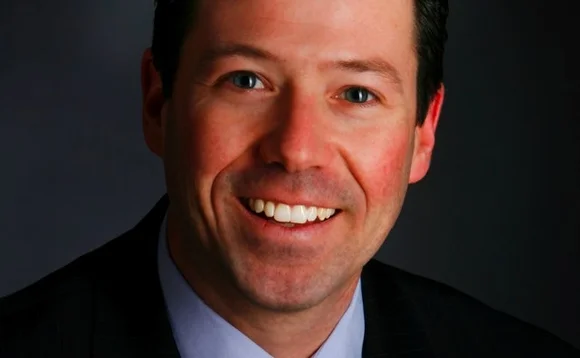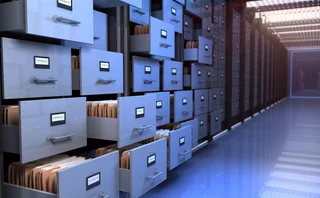Messaging Architecture Key as Citadel, REDI Partner on New OEMS


As Jake Thomases wrote for sibling publication Waters earlier this year, the road to an integrated, or hybrid, order and execution management system (OEMS) has proven a winding one, and for a variety of IT and business reasons, it's usually led to a dead end. But when REDI, the EMS provider born within Goldman Sachs, was officially spun off in July, a new opportunity arose.
"An integrated OMS/EMS desktop is a problem the buy side has been facing for north of a decade, and one that many folks have tried to solve, and honestly without much success," says Rishi Nangalia, REDI's CEO. When the spinoff became public, a range of inquiries came Redi's way for new partnerships, and the newly-independent provider listened with open ears.
Battle-Tested
One of them came from Citadel's new technology arm, which at the same time was exploring a formal EMS integration with its OMS—among several pieces of the IT suite at Ken Griffin's shop that are now being brought to market, in a push spearheaded by the firm's chief information officer, Tom Miglis, who was profiled in Waters last year.
"Both systems run as ASPs [application service providers], and both were founded by companies rich in technology history, so it really made sense to marry these two together for our clients," says Stuart Breslow, Citadel Technology's managing director.
Because the two products are so similar in nature, that helped us take a huge step forward with the POC. And they're both battle-tested; Citadel's OMS is used every day by one of the largest asset managers in the world. - Rishi Nangalia, Redi
After an initial evaluation, and with Citadel's encouragement, Redi launched a proof of concept (POC) that looked at integration, enlisting a small team of technologists to look at the possibility over a few weeks. A live demonstration test followed, where the combined product was vetted by personnel from Goldman and a handful of prime brokerage experts. The results, Nangalia says, were very positive.
From a technology perspective, two advantages were immediately apparent. First, Citadel Technology's OMS—unlike most of its peers that are installed at the client site, and are built around databases managing positions, accounting rules, among other functions—is built on event-driven messaging architecture and hosted in a third-party datacenter. That makes it far more similar to EMSs than its OMS brethren, and easier to integrate on a foundational level.
Second, by virtue of its internal use within Citadel's hedge fund, the OMS is modular and asset-neutral, handling both OTC and electronic trades. "That means they can add and advance functions individually, rather than with a big bang," Nangalia continues. "Because the two products are so similar in nature, that helped us take a huge step forward with the POC. And they're both battle-tested; Citadel's OMS is used every day by one of the largest asset managers in the world."
Three Dimensions
The partnership is moving in step with three dimensions towards a final product defined and built in tandem by both providers' development teams, with the fully-integrated OEMS to be available by the second quarter of 2014. The first of those dimensions is a FIX-based link that loosely ties the two systems together, which is already implemented, and will be familiar to those in the space. But often, it's here that previous attempts at OEMS integration have ended, and therefore fallen short.
"That link has to come first," Nangalia explains, "but this partnership is special because of the second two dimensions: a special API [application programming interface] integration that connects the EMS and OMS blotters and compliance engines in real-time, which in most other OEMS offerings are not synced with one another.
"Then comes the user interface," he continues. "Interestingly, when we demo-ed this with the eight banks, they couldn't make out where one system ends and another begins, it just happened naturally that our two schemes' inter-window interaction is identical, so there was zero spend on skinning of the GUI [graphical user interface]. Achieving either of those two things just isn't possible with a FIX link, alone."
Bottom Line
Both say that more complex buy-side operational requirements—whether audit trails, clearing, or margin and collateral management—mean investment management systems will need to work end-to-end, from portfolio construction and pre-trade funding allocation in the OMS, moving over to the variety of market access, order routing, and algorithmic functionalities available via EMS, and back to the OMS for post-trade analysis and reconciliation.
"Can one achieve these functions by muscling your way through [with separate systems]? Sure, but to achieve efficiencies of scale, across assets or with trading desks operating in different parts of the world, you really need something else," the REDI CEO says. "Traders going back and forth between blotters, or moving between three different screens, obviously hinders their ability to react to market events."
Only users who have a paid subscription or are part of a corporate subscription are able to print or copy content.
To access these options, along with all other subscription benefits, please contact info@waterstechnology.com or view our subscription options here: http://subscriptions.waterstechnology.com/subscribe
You are currently unable to print this content. Please contact info@waterstechnology.com to find out more.
You are currently unable to copy this content. Please contact info@waterstechnology.com to find out more.
Copyright Infopro Digital Limited. All rights reserved.
As outlined in our terms and conditions, https://www.infopro-digital.com/terms-and-conditions/subscriptions/ (point 2.4), printing is limited to a single copy.
If you would like to purchase additional rights please email info@waterstechnology.com
Copyright Infopro Digital Limited. All rights reserved.
You may share this content using our article tools. As outlined in our terms and conditions, https://www.infopro-digital.com/terms-and-conditions/subscriptions/ (clause 2.4), an Authorised User may only make one copy of the materials for their own personal use. You must also comply with the restrictions in clause 2.5.
If you would like to purchase additional rights please email info@waterstechnology.com
More on Trading Tech
Recent volatility highlights tech’s vital role in fixed income pricing
MarketAxess’ Julien Alexandre discusses how cutting-edge technology is transforming pricing and execution in the fixed income market amid periodic bouts of volatility
Banks fret over vendor contracts as Dora deadline looms
Thousands of vendor contracts will need repapering to comply with EU’s new digital resilience rules
Where have all the exchange platform providers gone?
The IMD Wrap: Running an exchange is a profitable business. The margins on market data sales alone can be staggering. And since every exchange needs a reliable and efficient exchange technology stack, Max asks why more vendors aren’t diving into this space.
This Week: Trading Technologies completes ANS deal; State Street; Equinix; and more
A summary of the latest financial technology news.
Interactive Brokers looks beyond US borders for growth opportunities
As retail trading has grown in volume and importance, Interactive Brokers and others are expanding international offerings and marketing abroad.
JP Morgan’s goal of STP in loans materializes on Versana’s platform
The accomplishment highlights the budding digitization of private credit, though it’s still a long road ahead.
As data volumes explode, expect more outages
Waters Wrap: At least for those unprepared—though preparation is no easy task—says Anthony.
This Week: ICE Bonds and MarketAxess plan to connect liquidity networks, TS Imagine, Bloomberg, and more
A summary of the latest financial technology news.







